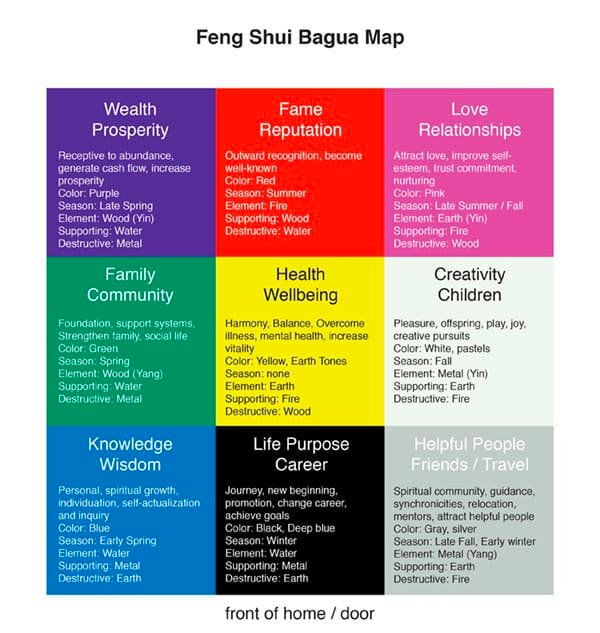In a world filled with constant hustle and bustle, finding moments of tranquility and balance becomes increasingly vital. One age-old practice that has gained prominence in this quest for harmony is Feng Shui. Originating from ancient China, Feng Shui is a philosophy that seeks to harness the energy of the environment to promote well-being, balance, and prosperity. Central to its teachings is the concept of creating a sacred space that resonates with positive energy, promoting a sense of peace and renewal.
Understanding Feng Shui: A Harmonious Way of Living
Feng Shui, which translates to “wind and water,” is rooted in the belief that the arrangement of our surroundings can deeply impact our lives. It draws inspiration from Taoist principles and the observation of nature’s flow. According to Feng Shui, the energy, or “chi,” in a space can either flow freely or become stagnant, affecting the occupants’ physical, mental, and emotional well-being. By consciously arranging elements in our environment, we can enhance the positive flow of energy and create a space that supports our intentions and aspirations.
The Fundamental Principles of Feng Shui
1. The Bagua Map: At the core of Feng Shui lies the Bagua, an energy map that divides a space into nine areas, each corresponding to different aspects of life, such as wealth, health, relationships, and creativity. By aligning the Bagua map with your living or working space, you can understand which areas need attention and enhancement.
2. Balance and Harmony: Feng Shui emphasizes the importance of balance and harmony. This involves creating a harmonious relationship between the five natural elements—wood, fire, earth, metal, and water—to ensure a balanced flow of energy. Each element is associated with specific colors, shapes, and materials that can be strategically incorporated into your space.
3. Decluttering and Clearing: A cluttered and chaotic environment can obstruct the flow of energy. To create a sacred space, it’s essential to declutter and organize your surroundings. By letting go of unnecessary items and keeping only those that hold meaning and value, you allow energy to circulate freely.
Crafting a Sacred Space with Feng Shui
1. Start with Intentions: Before you embark on your Feng Shui journey, set clear intentions for your space. What do you want to achieve? Whether it’s fostering creativity, improving relationships, or cultivating tranquility, your intentions will guide your decisions.
2. Consult the Bagua Map: Use the Bagua map to identify the areas of your space that correspond to your intentions. Enhance these areas using colors, shapes, and elements that resonate with the energy you wish to attract.
3. Embrace the Elements: Integrate the five elements thoughtfully into your space. For instance, introduce wooden furniture or plants for the wood element, candles or lighting for fire, earthy tones or ceramics for earth, metallic objects for metal, and water features or mirrors for water.
4. Mindful Placement: The arrangement of furniture and objects in your space matters. Position key pieces in a way that allows energy to flow naturally. Avoid placing furniture in direct paths or corners that obstruct movement.
5. Natural Light and Flow: Maximize natural light as it invigorates energy. Additionally, ensure good airflow by keeping windows open and incorporating air-purifying plants.
6. De-clutter and Maintain: Regularly declutter your space to prevent energy from stagnating. Keep surfaces clear, and periodically cleanse your space by smudging with sage or using other purification rituals.
7. Personal Touches: Infuse your personality into the space with meaningful decorations, artwork, and items that hold positive memories or symbolism.
8. Mindful Maintenance: Feng Shui is an ongoing practice. Regularly assess your space, make adjustments as needed, and remain open to the evolving energy of your environment.
Creating an Oasis of Calm
Feng Shui offers a profound opportunity to cultivate a sacred space that promotes well-being and connection. By aligning your intentions with the principles of Feng Shui, you can transform your living or working area into an oasis of calm, encouraging positive energy to flow freely and enrich your life in ways you might never have imagined.
How to Use a Bagua Map
A Bagua Map is a tool used in Feng Shui, a traditional Chinese practice that focuses on arranging your environment to promote balance, harmony, and positive energy flow. The Bagua Map is a grid or map that divides your living space into nine zones or areas, each associated with specific life aspects. Here are step-by-step instructions on how to use a Bagua Map:
Materials you’ll need:
1. A floor plan of your home or the room you want to assess.
2. A Bagua Map (a grid divided into nine sections).
Instructions:
1. Create a Floor Plan: Start by drawing a floor plan of your home or the specific room you want to analyze. Ensure it’s as accurate as possible, including walls, doors, windows, and any prominent architectural features.
2. Superimpose the Bagua Map: Overlay the Bagua Map onto your floor plan. Align the bottom of the map (the Knowledge, Career, and Helpful People section) with the wall containing the main entrance to the space. Make sure the map covers the entire floor plan.
3. Align Properly: It’s crucial to align the Bagua Map correctly. The main entrance should be in one of the three sections at the bottom of the map. The other sections will fall into place according to the orientation of your entrance.
4. Identify the Areas: Once the Bagua Map is aligned, you can identify which areas correspond to specific life aspects. Here’s a brief overview of the nine sections and their associations:
• Career (North): Associated with your career, life path, and journey.
• Knowledge and Self-Cultivation (Northeast): Focuses on education, personal growth, and self-improvement.
• Health and Family (East): Related to family, health, and well-being.
• Wealth and Prosperity (Southeast): Concerned with abundance, prosperity, and financial matters.
• Fame and Reputation (South): Deals with your reputation, recognition, and fame.
• Love and Relationships (Southwest): Connected to romantic and family relationships.
• Creativity and Children (West): Pertains to creativity, artistic pursuits, and children.
• Helpful People and Travel (Northwest): Focuses on support, mentors, and travel opportunities.
• Center: Represents the core of your life, health, and balance.
5. Assess Each Area: Examine each of the nine areas in your space. Consider how well each area corresponds to its associated life aspect. Note any issues or imbalances, such as clutter, poor lighting, or negative energy.
6. Make Adjustments: To improve the energy flow and balance in each area, make appropriate adjustments. This may involve rearranging furniture, adding elements, or decluttering. Use Feng Shui principles to enhance each area.
7. Set Intentions: As you make adjustments, set clear intentions for what you want to manifest in each area of your life. For example, in the Wealth and Prosperity area, you may want to focus on increasing financial stability.
8. Regular Maintenance: Keep your space in harmony by regularly maintaining the adjustments you’ve made and staying mindful of the Bagua Map’s principles.
Remember that Feng Shui is a highly personalized practice, and the Bagua Map is just one tool to help you create a more balanced and harmonious living environment. Feel free to adapt and adjust it to your specific needs and preferences.

Download Your Bagua Map




